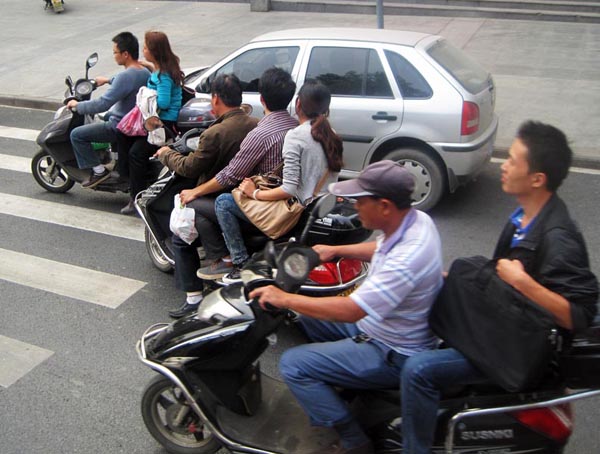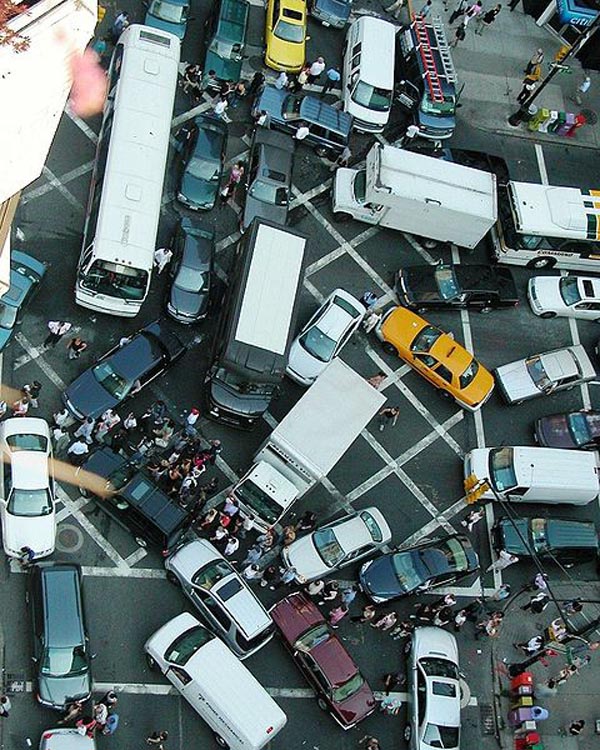One thing I didn’t expect to find in China was a city with a German history. After hearing about the city of Qingdao from some friends earlier this year, our curiosity got the best of us. They had talked of nice beaches, German architecture and copious amounts of inexpensive beer. Those three reasons, along with the fact that I have been living on Tsingtao beer for the last four years, were enough to send us off to this part of China to do some exploring. So after a few days in Shanghai, we headed north to the city of Qingdao.
[tr-slider id=”2693″]
History
This city of almost 7 million has an interesting past which gives it its present day character. Because of its strategic northeast seafront location, the Chinese government of 1891 decided to improve the area’s defensive fortifications. Germany was not impressed and seized the area six years later in 1897. It didn’t take long for the Germans to transform the old fishing village of Qingdao to more modern European standards with wide streets, good housing areas along with electricity and a good sewage system throughout. With the backing of the Imperial German treasury, and the Protestant and Catholic churches, the area soon had the highest school density and student enrollment per capita of all of China. In 1903, the Germania Brewery was established which has grown into the world-famous Tsingtao brewery. Japan took over the city in 1914 and it wasn’t until 1922 that is was officially reverted back to Chinese rule.
Today
We stayed at the Qingdao Kaiyue International Youth Hostel centrally located in the old section of town. It was very large, comfortable and close to all the major sites in this part of the city. Stepping out the front door was a step back into time as we walked down the hill towards the waterfront. Like any other Chinese city, the lane was full of street vendors, carts full of fresh fruit and vegetables, locals squatting and talking or playing games, and always the noise. It was an obstacle course to walk down the street in terms of avoiding stuff in front of us, beside us and under our feet. Walking along the sidewalk anywhere in China is a lesson in choreography as you step around pot-holes, over garbage, and around kids. As always, there were streams or puddles of liquid all aver the road and sidewalk, and per usual, we didn’t really want to know where they were originating!
But emerging at the bottom of the hill onto Zhongshan Road pulled us back into the present day as this main street is lined with modern shops and boutiques. Coming from Wuhan, a rock-bottom price, non-tourist area of the country, we never end up buying much in other cities. However, most visitors would probably think that there were some great deals to be found along this street with a little searching. The two sentences to remember when shopping in this country are, “Tai gui le” and “pien yi dier”, “too expensive” and “ a little lower price?” The first sentence that everyone learns is “bu yao”, don’t want. At the beach, we turned left and walked along a very wide boardwalk away from this central area.
Much of the area of interest to tourists is the old historic German section of town with its center at the intersection of Tai Ping Road and Zhongshan Road near the water. This is where you will find the historic Catholic and Protestant churches as well as many buildings of European influence that date back to the turn of the century. As you walk along the beachfront road in either direction, red tiled roof villas can be seen dotting the hillsides that slope down towards the water. We foolishly planned this little excursion to take place during a national holiday so the beach area was extremely crowded and messy. It was a typical city center type of beach.
As you move along the coast away from this central area there are six major beaches in total to explore.The further you go, the more you should plan. It is not easy to get a taxi once you are out of the main part of the city, and you need to know the bus routes before you can try to get back to where you came from. The beaches within walking distance are very crowded and full of children’s amusement paraphernalia and the same tacky tourist shops that are found on beaches around the world. One of the best beaches in town, Laoshan Beach, is a sixty minute drive from the train station but it is a good idea to arrange transportation there and back since taxis are very hard to get there. Old Stone Man Beach, with the highest waves, is a long wide beach that is closer to town and accessible by bus.
Always the Wedding Photos
Wherever you come across a scenic spot in China, chances are you will see someone in the middle of a photo-shoot for wedding pictures. Qingdao was no exception! As we were walking along the beachfront, we came across a bride dressed in her finest being professionally photographed with a proud mom and dad watching from the background. Sometimes, the dress actually belongs to the bride, more often it is owned by the photo studio. It is not unusual to see an over-sized dress pulled back and tied or pinned to fit for the occasion. The wedding might be happening tomorrow or next year; this is just all part of the process. We struck up a conversation with the father of the bride before we moved on and were informed that these photos would be part of a large display at the wedding reception.
In front of the Catholic Church, another major scenic spot in the city, we counted at least ten wedding couples using the historic church as a backdrop for their pictures. I have never seen so many wedding dresses in one place. One after another, the couples took their turn posing in front of the picturesque building or vying for the ideal spot on the square in front of the church. I doubt that many, if any, were actually going to have their wedding in the church. Every weekend here in Wuhan, we see couples going through the same motions on the shore of East Lake, the major inland body of water that dominates our home city.
Tsingtao Brewery
Being Canadian, and being a beer drinker, I had to include the Tsingtao Brewery Museum as part of our itinerary. Founded by the Germans when they occupied the city back at the beginning of the last century, the Tsingtao brewing company has made its brand famous around the world.. I think the growing Canadian expat population in China probably has spurred the success of this company in recent years! At one point in history, Tsingtao beer accounted for over 90% of China’s exports to the rest of the world. A variety of restaurants and pubs have sprung up around the brewery itself where you can purchase beer in vast quantities for next to nothing. In fact, if you a beer drinker, this is the place to visit if you want to drink beer around the clock without spending a lot of money!
The brewery itself is a lesson in public relations. The Tsingtao firm has retained the original brewery as a historic museum that you can walk through at your own pace with a self-guided map. The guides and employees at the front desk spoke very little English but everything was so organized and well laid out that we had no trouble finding our way around. Throughout the museum, the original brewing process is explained in detail through high quality displays, videos and ample signage in Chinese and English. Most of the old equipment is still in place and makes for a very interesting walk back in time. The whole thing is very well done and it was certainly the best museum of this type that I have visited since the Highland Park Distillery in Orkney, Scotland. Of course, there is a tasting room where everyone has the chance to sample the brew, albeit a very tiny glassful.
The last part of the tour walks you through the modern plant where you can view the modern brewing and bottling process in action. It is quite a dramatic change from the old wooden casks and straw packing displays to the modern stainless steel brewing tanks and non-stop conveyor belts moving steadily with their cargo of thousands of bottles of Tsingtao beer. I would highly recommend this tour to anyone who manages to make it to this historic city.
In closing…
Once out of the historic part of the town, the rest is pretty much like any other large Chinese city, with the rundown residential areas and countless concrete buildings stretching into the sky trying to find some fresh air. I don’t really think it is worthy as a destination in itself but would be worth visiting as part of a larger trip. There are nicer beaches in China and cleaner cities, but any architecture buffs would find the German influence very interesting. This is really unusual in this part of the world, and the color and variety of old European structures is a welcome assault on the senses. It is one of the few places in China that surfing is possible but, again, probably not a reason to hop on a plane and travel this far unless you are already coming for other reasons. And it is definitely not a place to go during one of China’s national holidays, as we discovered!












